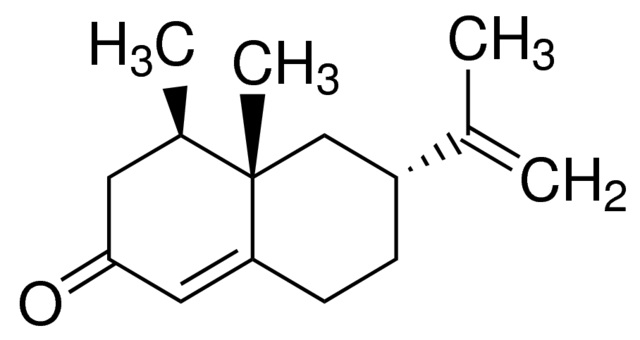(Addendum: Turns out, you can buy some noonkatone for yourself – $51 a gram. “Nootkatone, crystalline is used as an effective repellent in mosquitos, bed bugs, lone star ticks and head lice. It is also used as a food additive and flavoring material in beverages. It finds application in fragrances, cosmetics and pharmaceuticals. Further, it is used as a flavor material in beverage, frozen dairy and baked good applications.”)
For a number of years researchers with the Centers for Disease Control, and others, have been trying to understand why a few compounds taken from essential oils of a couple of cedar species seems to be effective as repellents and insecticide against many ticks and mosquitoes. (I thought “essential oil” was a marketing term used by New Agey types, but it has a real definition: They’re distillations of aromatic compounds, or molecules with certain structures that aerosolize easily, so they are associated with specific smells.)
A report (here) from two researchers with the CDC’s Division of Vector-Borne Infectious Diseases, put it this way: “They have been shown to have biological activity against a variety of mosquito and tick species. Although these components act as both repellents and insecticides, how they function in either capacity is unknown.”
What’s exciting, though, is that they don’t seem to operate the same way as existing insecticides and repellents – we know they don’t interact with the same molecular targets as existing insecticides, even if we don’t know exactly what they do – and this is of great potential value if any biting critters develop resistance to an existing chemical.
What’s this got to do with our governor? He just wrote a letter to the EPA, urging it to speed up review of nootkatone, which is derived from the Alaska yellow cedar, also known as the Nootka cypress, for use as an insecticide. The letter says that quick approval could produce products in time for use next spring, when hungry Lyme-laden ticks emerge from winter snow.
The CDC says on its website (here) that “Nootkatone appears to work differently compared to currently available insecticides and may be a valuable new option for fighting the growing problem of insecticide resistance in mosquitoes. It can be used on skin and lawns. To expand available insect repellent options, nootkatone could be formulated to be used in soaps, sprays, and lotions.” The Swiss biotech firm Evolva, which develops health and beauty products via fermentation, has bought the rights to develop products with nootkatone. It notes on its website:
Nootkatone already occurs in the natural environment and has an established track record as a flavor and fragrance ingredient, providing attractive characteristics in a number of respects. Nootkatone can be extracted in minute quantities from the skin of grapefruit or the bark of the Alaska yellow cedar (also known as the Nootka cypress), or produced on an industrial scale from brewing via yeast fermentation. Evolva is currently performing all necessary safety and efficacy studies to get nootkatone approved by the US Environmental Protection Agency, initially as a repellent against the blacklegged tick.


 Return to the Concord Monitor
Return to the Concord Monitor